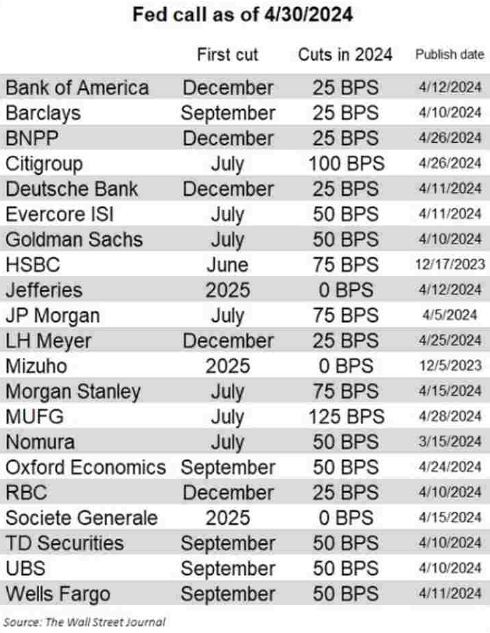Interest rates are staying higher-for-longer. What's next for investors?
The Federal Open Market Committee has decided to keep interest rates unchanged once again. This was very much in line with market expectations and comes at a time when US stock indices are seeing increasing weakness across most sectors and only saved by the mega-caps.
While Jerome Powell was seemingly baited with hawkish-questions a couple of times at the post-FOMC meeting press conference, the US Fed chair made it clear that there were only two possible scenarios being considered. Either to hold the rates longer until more concrete evidence that restrictive policies are working, or, to cut rates eventually.
What was also very telling was that JOLTs Job Opening data last night, Jerome Powell also mentioned that "a couple of tenths in the unemployment rate" would not make the labour market weaker. Analysts took this to mean that even if unemployment numbers were to edge higher, this would not encourage the US Fed to pivot. If anything, it is a sign that the labour market is finding its equilibrium.
Following the FOMC interest rate decision, analysts are now expecting the first rate cut to be delayed to July, according to a Wall Street Journal poll. July. Yet, there is a growing number of market watchers who believe the Fed will only cut rate in the 3rd quarter of the year.

Markets are now struggling to catch its breath and assimilate all these information just before the big non-farm payroll data that is due tomorrow.
With all these economic data due, we can expect more volatility going forward and bigger whipsaws in price action. At the same time, US stock indices have been seeing some headwinds in recent weeks. What does this mean to the regular investor?
At this point, I would like to share a piece of advice for the regular man on the street:
"Time in market is just as important as time out of the market."
Unlike the institutional crowd who are paid to be in the markets, the retail investor can choose to sit on the sidelines and wait out the volatility and shake out that we are seeing in the markets.
When it comes to the recent weakness in the stock markets, investors should not blindly 'dollar-cost-average' or in more trendy terms 'buy-the-dip' every single time the market drifts lower.
Rather they should wait till the markets have at least shaped some reversal from the lows. A good guide would be about 2 weeks of waiting period with reversal chart patterns as a pre-confirmation.
Alternatively, with interest rates remaining higher for longer, short term US treasury bonds which pay higher interest rates would definitely be a good option as well.
Disclaimer: Moomoo Technologies Inc. is providing this content for information and educational use only.
Read more
Comment
Sign in to post a comment
